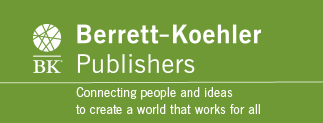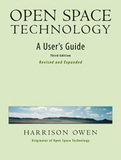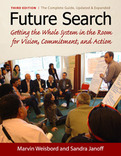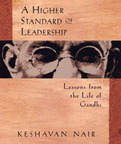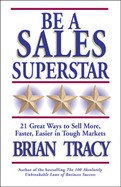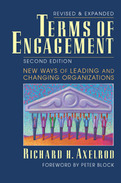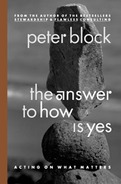Open Space Technology: A Users Guide is just what the name implies: a hands-on, detailed description of facilitating Open Space Technology (OST). OST is an effective, economical, fast, and easily repeatable strategy for organizing meetings of between 5 and 2,000 participants that has been used in thousands of organizations in 134 countries and just keeps growing in popularity. Written by the originator of the method, this is the most authoritative book on the rationale, procedures, and requirements of OST.
OST enables self-organizing groups of all sizes to deal with hugely complex issues in a very short period of time. This step-by-step users guide details what needs to be done before, during, and after an Open Space event.
Harrison Owen details all the practical considerations necessary to create Open Space. He begins with the most important questionshould you use Open Space at all?and examines what types of situations are appropriate for Open Space Technology and what types are not. He then goes on to look at nuts-and-bolts issues such as supplies, logistics, and who should come and how you should go about getting them there.
This third edition adds a survey of the current status of Open Space Technology around the world, an updated section on the latest available technology for report writing (a key aspect of the Open Space process), and an updated list of resources.
2010
-
The latest edition of the classic, definitive book on a change method proven effective worldwide
-
Thoroughly revised and updated, with nine new chapters
-
Provides a wealth of tools, handouts, and other practical aids
Future Search is one of the best established, most widespread and most effective methods for enabling groups of people to collectively move forward. It has been used all over the world for all kinds of purposes: to redesign an IKEA product line in Sweden, develop an integrated economic development plan in Northern Ireland, organize the demobilization child soldiers in Southern Sudan, and help a Hawaiian community reconnect with traditional values, This book, written by the originators of the process, is the most up-to-date edition of the definitive work on this powerful change method.
Incorporating input from the worldwide Future Search community, the third edition has been completely revised, reorganized and updated, including nine brand new chapters. There are new cases and examples throughout, as well as new material on using virtual technologies to hold Future Searches, combining Future Search with other change methods, and the growing global reach of Future Search. Marvin Weisbord and Sandra Janoff have greatly streamlined the process, providing specific guidance for Future Search sponsors, steering committees, participants, and facilitators, and new suggestions for how to sustain action after the Future Search is over. Theyve added information on the economic benefits of a Future Search, striking evidence of Future Searchs efficacy, information how Future Searches can go green, and more.
Future Search uniquely enables people to take down the walls that keep them apart, and Weisbord and Janoff take you through every step of the process. They include a wealth of resources such as handouts, sample client workbooks, follow-up reports, and other practical tools. If you want to do strategic planning, product innovation, quality improvement, organizational restructuring, or any other major change in a participative, whole system way, this book is your guide.
What sets this book apart from similar titles
- Other books in this field, such as Built to Change, contain a bias of top-down design which can make their suggestions unwieldy to implement. This book takes a more grassroots approach to searching for the future, where all stakeholders work cooperatively to create a shared vision of the future.
- It is an optimistic, aspiring book, which describes the change process as "an emotional rollercoaster" which can be upsetting at times but is overall exciting and fun. The Heart of Change Field Guide focuses more on the difficulties and obstacles of leading change within an organization (how to "get around" the people who drag you down, hold you back, etc.) Future Search's emphasis on both positivity and inclusivity sets it apart among change books.
- Future Search methods are so successful, that thousands of people around the world have sought and received training from the Future Search Network: http://www.futuresearch.net/.
o How to embody the values of service, truth, and personal responsibility in leadership roles
o Insights about management, leadership, and purpose from a successful businessman and perceptive student of Gandhi's life and writings
Though Gandhi is one of the most written-about figures of the twentieth century, this is the first book to apply lessons from his life to the practical tasks faced by contemporary leaders-from corporate managers and executives to government administrators, nonprofit professionals, educators, and others.
In times shaped by colonialism, dictatorships, and two World Wars, Gandhi demonstrated that an idealist could also be a practical and effective leader. In our times of increasing cynicism about the quality of leadership we can expect and aspire to, Keshavan Nair reminds us that, "We are all engaged in leadership, in practicing it and selecting those who will lead." In A Higher Standard of Leadership, he offers a pragmatic guide based on the concepts Gandhi exemplified:
o leadership is service, not a path to power and privilege;
o effective goals, decisions, and strategies can be guided by moral principles;
o a single standard of conduct, based on absolute values, should be maintained in both public and private life.
A lifelong student of Gandhi's teachings and a businessman with more than 25 years of experience in corporate and governmental leadership development, Nair is uniquely positioned to bridge the two worlds. Using illustrative examples from Gandhi's life and writings, he identifies commitments-to conscience, openness, service, values, and reduced attachments-and describes the courage and determination necessary to work and lead by them. In simple and direct language, he explores the process of making decisions, setting goals, and implementing actions guided by the spirit of service and commitment to values that is essential to the realization of a higher standard of leadership in our workplaces and communities.
- Shows America's economic system to be at odds with its social and political goals and proposes a system designed to increase personal freedom
- Questions the most basic assumptions that drive our economic system, and argues that its entire structure must be challenged
2003
Brian Tracy shares the most important principles for sales success he has discovered in 30 years of training more than a half million sales professionals in 23 countries.
Based on Tracys detailed discussions with top salespeople and his keen observation of their methods, as well as his own experiences as a record-breaking salesman, these guidelines address both the inner game of sellingthe mental componentand the outer game of sellingthe methods and techniques of actually making the sale.
Concise and action-oriented, Be a Sales Superstar is a handbook for busy sales professionals, providing key ideas and techniques that will immediately increase your effectiveness and boost your results.
Brian Tracy shows you how to:
Get more and better appointments, easier;
Build high rapport in the first few minutes;
Make better, more effective sales presentations
Close more sales faster than ever before
Apply Tracys 21 great ways to be a superstar salesperson, and your success in selling will become unlimited.
2010
- Winner of the 2001 Breakthrough Business Book of the Year award from Independent Publisher
- Written by the author of the bestselling books Flawless Consulting (more than 500,000 copies sold), The Empowered Manager (more than 250,000 copies sold), and Stewardship (more than 160,000 copies sold)
- Shows how our obsession with tools and techniques actually prevents us from doing things we believe in
- Identifies what is required of us to not only know what matters but to act on that knowledge
